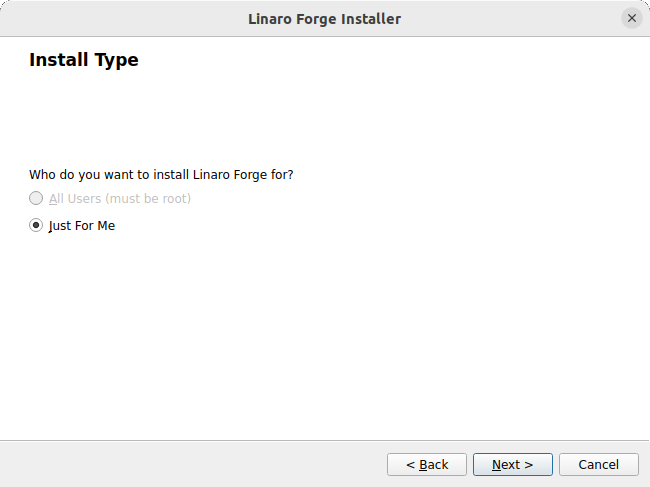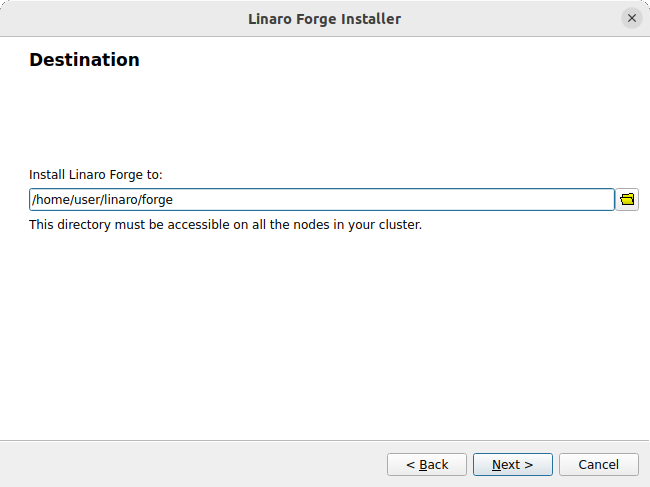Linux graphical install
Install remotely using the Linaro Forge Linux graphical installer.
Procedure
Download the installation package from Linaro Forge Downloads
Untar the installation package and run the installer executable with these commands:
tar xf linaro-forge-<version>-linux-<arch>.tar
cd linaro-forge-<version>-linux-<arch>
./installer
Note
Replace
<version>with the four digit version number of your installation package, using this formatxx.x.x. Replace<arch>with the required architecture (AArch64, x86_64). For example:linaro-forge-xx.x.x-linux-aarch64.tar.On the Install Type page, specify who can use Linaro Forge on this system.
Note
Only an administrator (root) can install Linaro Forge for All Users in a common directory, such as
/optor/usr/local. Otherwise, the Just For Me option is selected by default, and Linaro Forge is installed in the local directory.
On the installer Destination page, enter the directory where you want to install Linaro Forge.
Note
For a cluster installation, choose a directory that is shared between the cluster login or frontend node, and the compute nodes. Alternatively, install or copy into the same location on each node.

Installation progress displays on the Install page.
Note
The default Forge installation path is
/opt/linaro/forge/<version>/binwhen installed by root or$HOME/linaro/forge/<version>/binotherwise. Please add the Linaro Forge installation path to thePATHenvironment variable to make the Linaro Forge tools available to the console:export PATH=<Forge installation path>/bin:$PATH
Results
The installation adds icons for Linaro Forge to the Development menu in your
desktop environment. When installation is complete, read the
instructions in the RELEASE-NOTES file in the install package, for details about how
to run Linaro DDT, Linaro MAP, and Linaro Performance Reports.
Next steps
Time-limited evaluation licenses are available from the Linaro website: free trial licence.
Linaro Forge supports a large number of different site configurations and MPI distributions. You must ensure that you fully integrate all components into your environment. For example, ensure that you propagate environment variables to remote nodes, and that tool libraries and executables are available on the remote nodes.